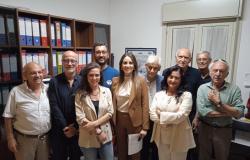The theme of valorising the archaeological heritage of Taranto, the ancient capital of Magna Graecia, is strongly felt by citizens and scholars, and periodically comes back to the attention of the public through the media.
The city preserves important memories of its history underground, not only of the Greek period, but also of the Roman one. In particular, the remains of the amphitheater, located in the Covered Market area and already identified by Luigi Viola at the end of the nineteenth century, await to be protected and enhanced.
Prestigious names from Italian and European archeology have expressed themselves on this topic, such as Dieter Mertens, Francesco D’Andria, Emanuele Greco, Pier Giovanni Guzzo, Giuliano Volpe, Luigi Todisco, Grazia Semeraro, and many others, all with the hope of bringing to light and enhance the buried building.
A signature collection aimed at the recovery and valorisation of the remains of the amphitheater is currently underway and has exceeded 3,000 signatures in just a few days.
“The recovery and valorisation of the amphitheatre, in addition to representing the historical and identity narrative of the past, can become an important tourist attractor for our territory – the city councilors write in a note Gianni Liviano, Luca Contrario, Enzo Di Gregorio, Antonio Lenti, Lucio Lonoce -. The creation of the new PUG (General Urban Plan) entrusted to the Planning Office coordinated by Professor Karrer is underway”.
The councilors ask the mayor and the council to “activate a collaboration with the management of the MArTA (National Archaeological Museum of Taranto) and with the Archaeological Superintendence, to resolve the problem of the open excavation site in the courtyard of the Covered Market, currently used as a car park and completely cluttered with cars, where two walls in opus reticulatum are “exposed”, chipped, abandoned and receptacle of waste, belonging to the monument which, under the Empire of Augustus, marked the landscape of the ancient Greek metropolis in view of the Sea Grande and its Gulf”.
And to “initiate, in concert with the peripheral structures of the MIC (Ministry of Culture) and with the Apulian universities, the actions necessary to follow up on the requests contained in the appeal, reported below:
A) Start geophysical surveys throughout the area to identify the still buried structures and to ascertain the possible presence of the Greek theatre under the Roman age structures.
B) Resume the research and excavation activity inside the courtyard of the Covered Market and in the area of the Roman amphitheater.
C) Publish the results of the investigations carried out to date.
D) Set up an exhibition, through panels, to tell the stories of the Taranto arena.
E) Clean up and arrange the still open essay in a dignified manner.
F) Consider the possibility of moving the parking lot to another location.
G) Under the aegis of the Municipality of Taranto, work with the Superintendency, the MArTA and the Apulian Universities to develop a restoration and enhancement project for the amphitheatre, which will allow access to European and national funding.





